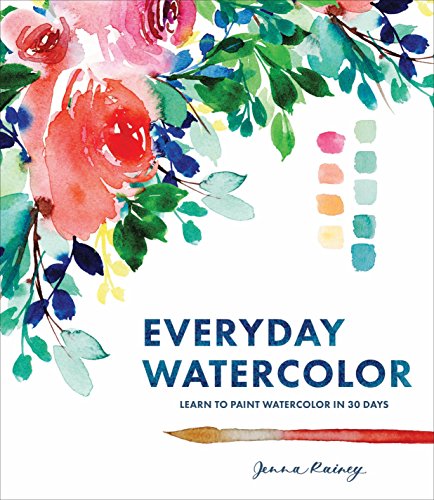Everyday Watercolor: Learn to Paint Watercolor in 30 Days *(PDF)
A contemporary paint-every-day watercolor guide that explores foundational strokes and patterns and then builds new skills upon the foundations over the course of 30 days to create finished pieces. This beautifully illustrated and inspiring guided watercolor-a-day book is perfect for beginning watercolor artists, artists who want to improve their watercolor skills, and visual creatives. From strokes to shapes, this book covers the basics and helps painters gain confidence in themselves along with inspiration to develop their own style over the course of 30 days. Featuring colorful contemporary art from Mon Voir design agency founder and Instagram trendsetter Jenna Rainey, this book's fresh perspective paints watercolor in a whole new light. Read more
Download Now

Why Must Read Everyday Watercolor: Learn to Paint Watercolor in 30 Days?
If you don't want to read the stuff below, the summary: if you bought this book, disregard the supplies recommendation. You will waste money for no good reason. I guess the reason why this book gained a lot of popularity is that #everydaywatercolor hashtag on instagram. This is how I got there, too. I also guess for most readers it is the first guide for watercolors, hence positive reviews. The author I self-taught, I get it, but some of the things she writes do not stand even a brief google check: 1. "Color theory" it gives is plain wrong. Red-yellow-blue is not a "primary palette", cyan-magenta-yellow is. RBY "theory" was left behind in 19th century. 2. Pigment series and quality. The author is very contemptuous about "student grade" watercolors and "hues", and seems to imply that the series number on the tube somehow corresponds to the overall quality of a paint. This is just wrong. First, the author herself mixes pigments a lot (obviously), unconcerned with "muddiness". Second, the tube number has nothing to do with quality -- only with the cost to produce. The author herself uses "Opera Rose", which is series 2, but has the worst possible permanence ranking (B). Third, no need to shy off student palettes. I started with a Cotman set by Winsdor and Newton. They are good, you just won't get any expensive pigments there, like violets and pinks. And this brings me to the main point: this book can make you waste a lot of money. Of course, when you want to commit to 30-day marathon, you want to have all supplies on hand. The book does not give a definite list of supplies, but has a lot of recommendations and "I use those" kind of stuff, which can be misguiding for a complete beginner. For example, in recommendations she lists a round brush #16, which is very expensive (because it is big!). It is used only in the last couple of exercises to add background wash. A much-cheaper 1 in flat brush will do the job, and even round #6 will work in a pinch. And I can go on and on like that.
Read Now